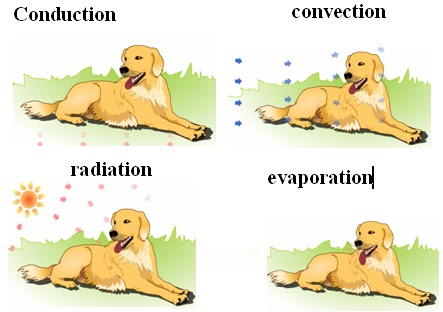Difference between Ectotherm and Endotherm

Kingdom Animalia has been divided into two main groups (ectotherms and endotherms) based on their body temperatures. The animal species that maintain a specific body temperature have been categorized as endotherms, whereas those animals that do not maintain a specific internal body temperature are referred to as ectotherms. Hence, the basic difference between endotherms and ectotherms is their body temperature. The former generate their own heat, while the latter lack the ability to regulate their own body temperature through internal processes and rely on outside world for heat and cooling.
Endotherm refers to warm-blooded animals such as mammals and birds, whereas the term ectotherm refers to all cold-blooded animals such as reptiles and amphibians. The body temperature of endotherms stays almost constant, regardless of the temperature of their surroundings and the environment in which they are living. On the other hand, the body temperature of the ectotherms changes with the changes in environment, as these animals have the ability to adopt the temperature of their surroundings. Endotherms’ body temperature is usually much warmer than the temperature of the environment, whereas the body temperature of ectotherms is at the same level.
Instructions
-
1
Ectotherm
The term ectotherm is used to describe cold-blooded animals or species in which the internal physiological sources of heat are relatively small or are of quite negligible importance in controlling body temperature. Such organisms rely on environmental heat sources to maintain their metabolic rates. All reptiles and amphibians are ectotherms. These organisms usually lie in environments where temperatures are practically constant. When they feel the need to warm up, they move to the areas with higher temperatures, and when they feel overheated they head to regions with low temperatures to stabilize their body temperature.
Image courtesy: sheppardsoftware.com
-
2
Endotherm
Endotherms are animal species that maintain their body temperatures through internal processes and do not rely purely on their surroundings. The word endotherm is a combination of two Greek words - “endo” meaning within and “therme” meaning heat, signifying that these animals have internal heat. Nevertheless, even Endotherms have to make use of ambient heat at times.
All warm-blooded animals, mammals and birds, are endotherms, including human beings. A human body generates about two third of its heat through metabolism in the thorax, abdomen and brain. The human brain generates about 16 percent of the total heat produced by the human body.
Image courtesy: biomhs.blogspot.com







